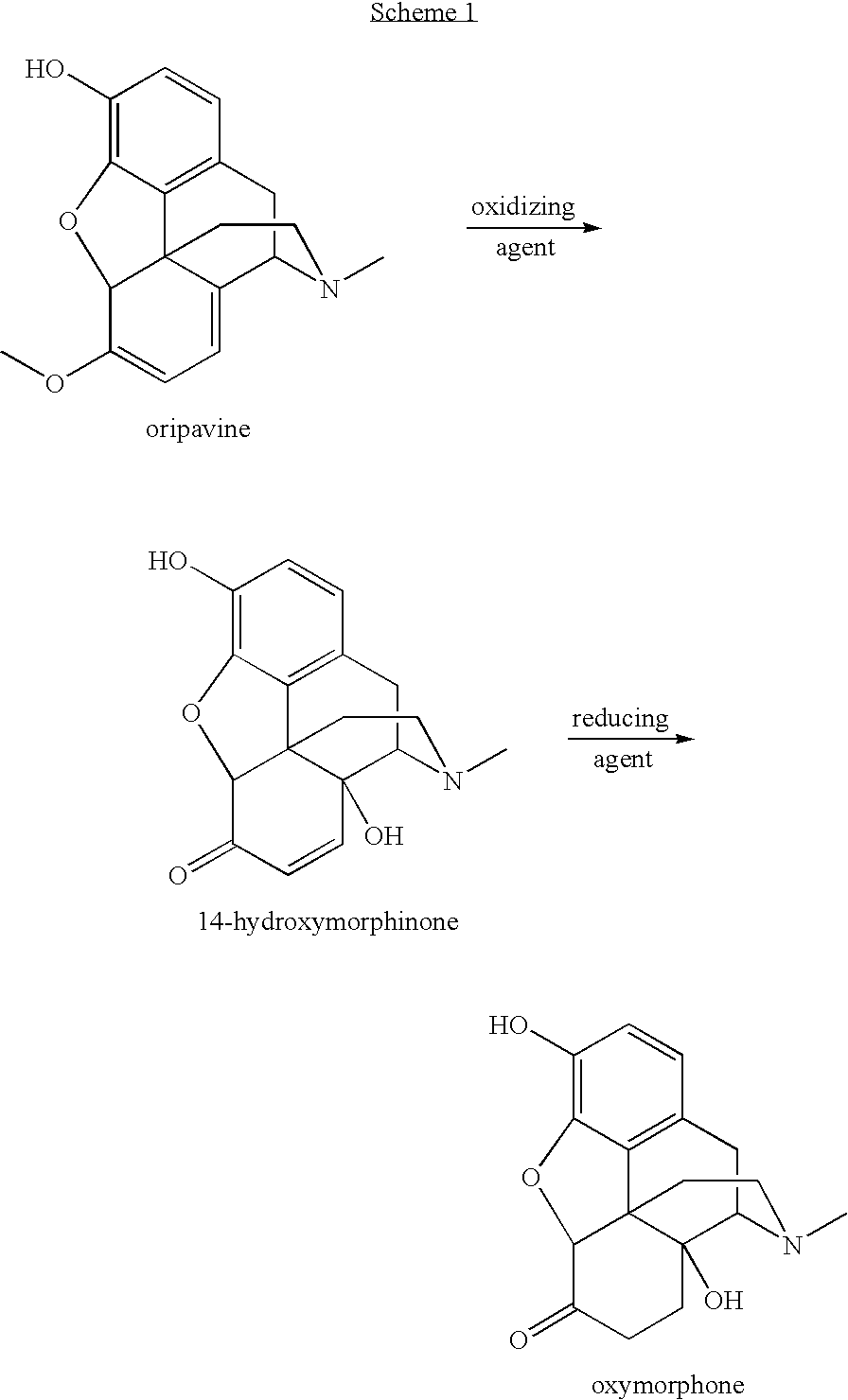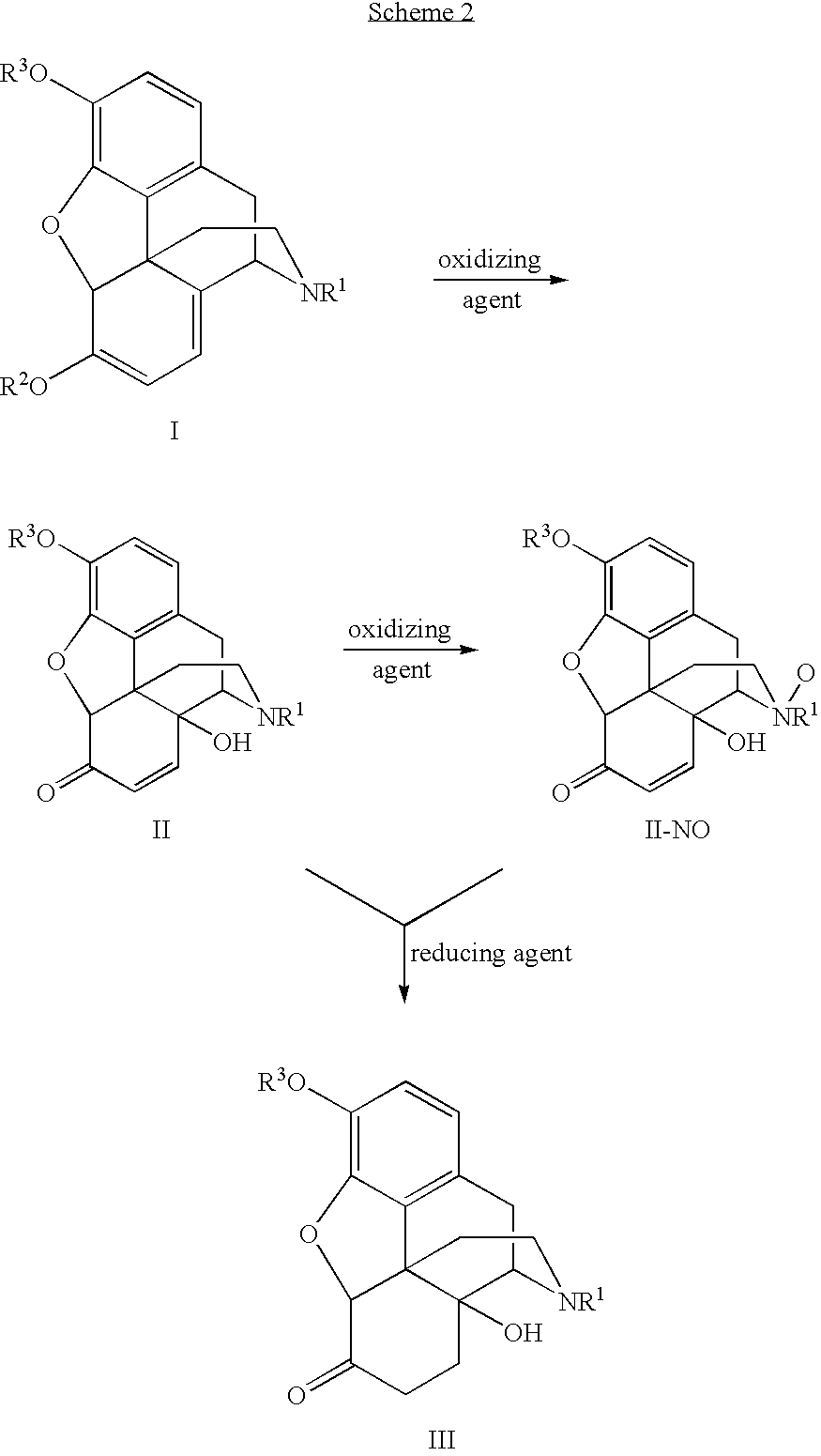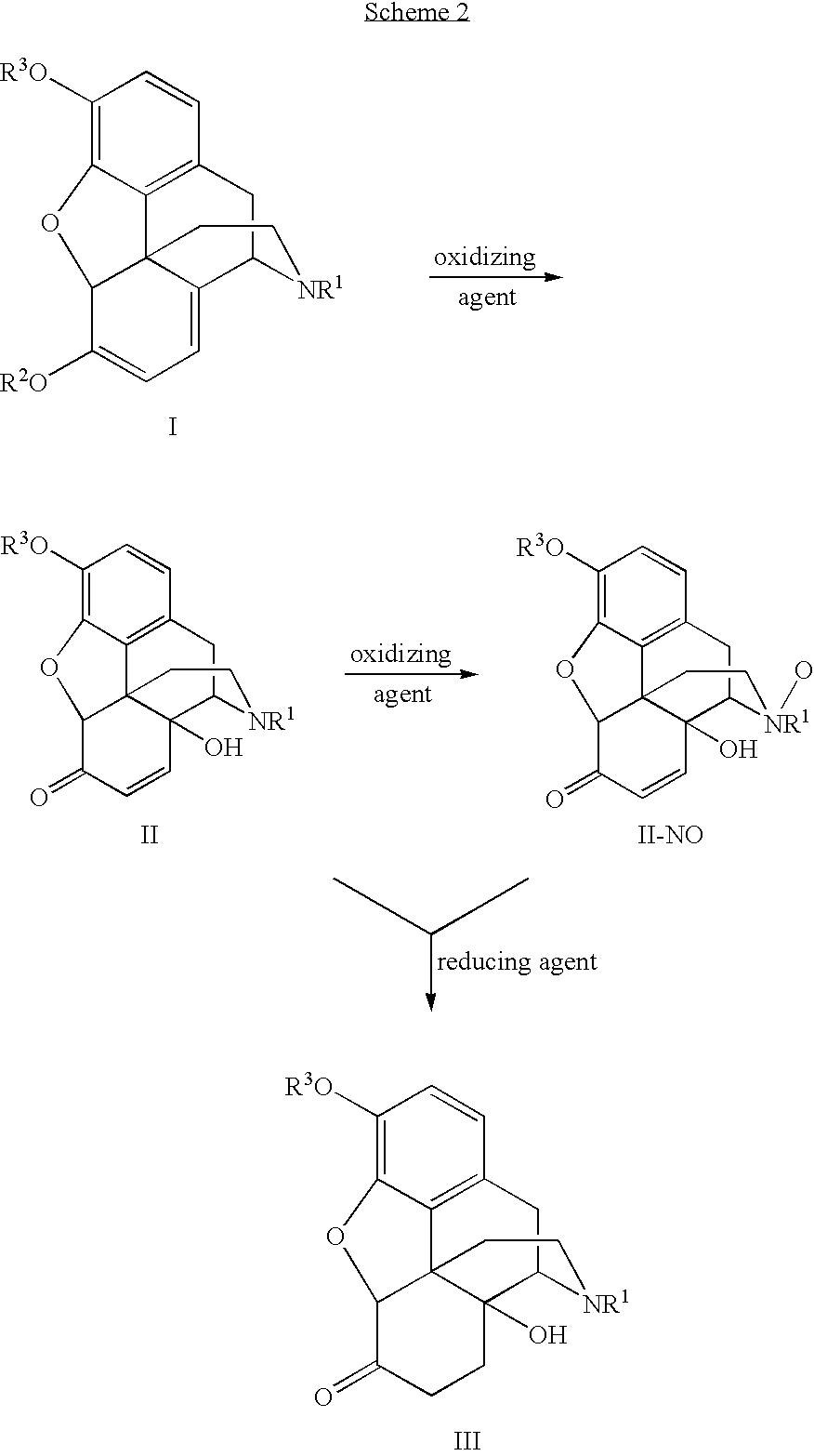Preparation of oxymorphone from oripavine
a technology of oripavine and oxymorphone, which is applied in the field of preparation of oxymorphone from oripavine, can solve the problems of difficult use of oripavine, low yield, and high cost of oxycodone starting material, and achieve the effect of improving yield
- Summary
- Abstract
- Description
- Claims
- Application Information
AI Technical Summary
Benefits of technology
Problems solved by technology
Method used
Image
Examples
example 1
Preparation of 14-hydroxymorphinone
[0040]To a 200 mL flask, dried oripavine (10.00 g, 95% wt / wt %) was dissolved in HOAc / H2O (1:4, 100 mL) and cooled to 5° C. to 10° C. Peroxyacetic acid, CH3CO3H, (9.1 mL, 32% wt / wt %) was added over 3 minutes and the reaction mixture was stirred at 5° C. to 10° C. for 30 minutes. HPLC data showed that the reaction was completed. The reaction mixture was allowed to warm to 25° C. for 30 minutes. H2C2O4 (3.0 g) was added to the reaction mixture, and was stirred at room temperature for 30 minutes and then heated to 50° C. for 30 minutes. The solution was assayed by HPLC and >99% conversion was observed.
example 2
Preparation of Oxymorphone
[0041]To the solution produced in Example 1, 1.0 g 10% Pd / C was added and stirred for 10 minutes. The flask was under vacuum and nitrogen filling for 4 times. It was then under vacuum and hydrogen filling for 4 times. The mixture was stirred under hydrogen (60 PSI) at 80° C. for 3 hours. The mixture was cooled to room temperature and filtered. The resulting solid residue was washed with the solution of HOAc / H2O (1:4, 20 mL.) The solution was assayed by HPLC and >99% conversion from 14-hydroxymorphinone was observed. The yield for the product in the solution before the isolation was 95% from oripavine to oxymorphone. The purity of oxymorphone is >97% (peak area %) and the ratio of oxymorphone to bis-1,1′-oxymorphone is >99:1. The solution was extracted with CHCl3 (2×10 mL) and then heptane (15 mL). The aqueous layer was cooled to 0° C. to 10° C. 55 mL of KOH (50% wt / wt % in water) was added slowly and the pH of the mixture was adjusted to 8-9. The reaction t...
example 3
Entry 1 of Table 1
[0042]Oripavine (10 g) was dissolved in HOAc / H2O (2:3, 50 mL, 5.0 mL per g of oripavine). CH3CO3H (32% wt / wt) (7.0 g, 0.7 g / g or oripavine) was added to the oripavine solution and stirred at 10° C. for 5 minutes. 5% Pd / C (1.0 g, 0.1 g per g of oripavine) was added to the reaction mixture under hydrogen (60 psi) at room temperature for 60 min, and then the temperature was raised to 80° C. for 1.5 hour.
PUM
| Property | Measurement | Unit |
|---|---|---|
| pH | aaaaa | aaaaa |
| pH | aaaaa | aaaaa |
| pH | aaaaa | aaaaa |
Abstract
Description
Claims
Application Information
 Login to View More
Login to View More - R&D
- Intellectual Property
- Life Sciences
- Materials
- Tech Scout
- Unparalleled Data Quality
- Higher Quality Content
- 60% Fewer Hallucinations
Browse by: Latest US Patents, China's latest patents, Technical Efficacy Thesaurus, Application Domain, Technology Topic, Popular Technical Reports.
© 2025 PatSnap. All rights reserved.Legal|Privacy policy|Modern Slavery Act Transparency Statement|Sitemap|About US| Contact US: help@patsnap.com



